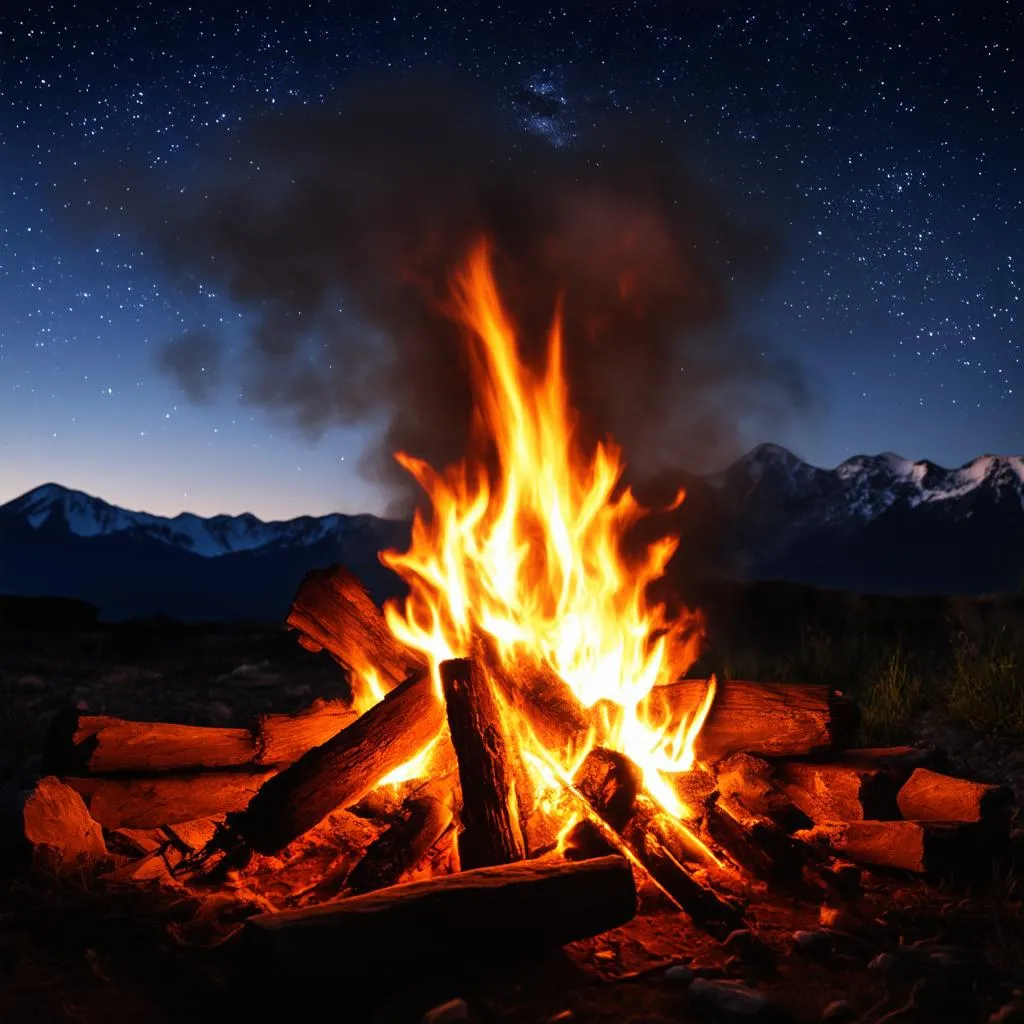Have you ever sat around a campfire, mesmerized by the dancing flames and the wispy tendrils of smoke reaching for the sky? Or perhaps you’ve noticed how cigarette smoke seems to curl and drift upwards, seemingly defying gravity? The direction smoke travels might seem like a simple question, but it actually reveals fascinating insights into the physics of heat, air, and even a bit of travel wisdom.
The Upward Journey: Why Smoke Usually Travels Up
In most cases, smoke does indeed travel upwards. This is due to a combination of factors:
1. Convection: The Power of Rising Heat
When you light a fire or a cigarette, the combustion process generates heat. This heat warms the surrounding air, causing it to become less dense and rise. As the hot air rises, it carries the smoke particles along with it, creating the illusion of smoke “traveling” upwards.
Imagine you’re releasing a helium balloon. The balloon, being lighter than the surrounding air, naturally floats upwards. Hot air, similarly, behaves like the helium balloon, carrying the smoke along for the ride.
2. Buoyancy: Smoke’s Lighter Side
Smoke itself is composed of tiny particles, including soot, water vapor, and gases. These particles are generally lighter than the surrounding air, further contributing to their upward movement. This is similar to how a feather, being lighter than a rock, will float in the air while the rock drops.
3. Environmental Factors: Wind and Air Currents
While convection and buoyancy play primary roles, environmental factors like wind and air currents can influence the direction of smoke travel. A gentle breeze can easily push smoke sideways or even downwards momentarily.
Think about standing on a hilltop on a windy day. The wind can whip around you, causing the smoke from your campfire to swirl and change direction unpredictably.
 Campfire Smoke in the Wind
Campfire Smoke in the Wind
But Wait, Sometimes Smoke Goes Down?
While smoke primarily travels upwards, there are instances where it seems to defy this rule and travel downwards. This is usually a result of:
1. Temperature Inversion: When Cold Air Traps Smoke
Under specific atmospheric conditions, a phenomenon called temperature inversion can occur. This is when a layer of warm air sits on top of a layer of cold air, trapping the cold air near the ground. Since smoke rises with hot air, during a temperature inversion, it can get trapped beneath the layer of warm air, causing it to spread horizontally or even downwards.
Imagine a lid being placed on top of a pot of boiling water. The steam, unable to escape, gets trapped and spreads outwards. Temperature inversions can similarly trap smoke near the ground.
2. Downward Air Currents: Nature’s Invisible Hand
Sometimes, natural or man-made structures can create downdrafts or downward air currents. These currents can push smoke downwards, even if the air itself isn’t particularly cold.
Think about walking past a tall building on a windy day. You might experience a sudden gust of wind blowing downwards from the building, pushing you slightly off balance. Similar downdrafts can influence smoke direction.
Smoke and Travel: A Few Things to Consider
Understanding the behavior of smoke can actually be helpful when traveling, particularly when it comes to:
- Campfires and Outdoor Cooking: Being aware of wind direction is crucial when building campfires or cooking outdoors. You want the smoke to drift away from your campsite, not engulf it.
- Accommodation: If you’re sensitive to smoke, requesting a non-smoking room or choosing accommodation away from areas known for smoky conditions (like industrial areas) can make your trip more enjoyable.
- Wildfires: In regions prone to wildfires, understanding how wind and temperature inversions affect smoke dispersal can be crucial for safety and planning evacuation routes. For more information on travel insurance and wildfire coverage, check out this article.
FAQs about Smoke Travel
Q: Why does smoke smell stronger at night?
A: This isn’t because smoke actually travels downwards at night. Instead, it’s due to the fact that cooler, denser air near the ground at night traps smells more effectively, making the smoke seem stronger.
Q: Can smoke travel long distances?
A: Absolutely! Smoke from large wildfires can travel thousands of miles, impacting air quality in distant regions.
Q: Does the type of wood affect smoke direction?
A: While the type of wood affects the smell and color of smoke, it doesn’t significantly impact its direction of travel.
Conclusion: The Science Behind the Smoke Signals
So, the next time you see smoke curling upwards from a campfire or notice it behaving strangely on a windy day, remember the fascinating interplay of heat, air, and physics at play. Understanding these principles can not only satisfy your curiosity but also enhance your travel experiences by helping you make informed decisions about safety, comfort, and enjoying the great outdoors.
 Hiker Watching Sunrise from a Mountain
Hiker Watching Sunrise from a Mountain
What are your thoughts on how nature influences our travel experiences? Share your stories and insights in the comments below! And be sure to explore TravelCar.edu.vn for more travel tips, destination guides, and fascinating insights into the world around us.